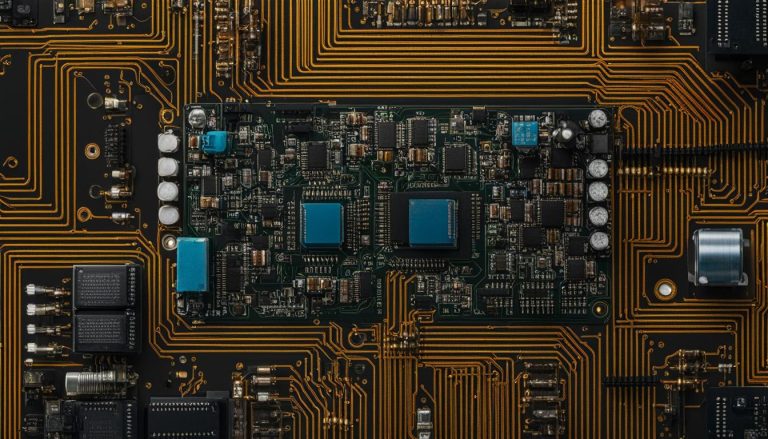How To Get Started In Hardware Design
If you have a passion for computer hardware and want to turn it into a thriving career, you’re in the right place. Hardware Design Engineers play a crucial role in modern business, creating and designing a wide range of computer hardware components that are used for both internal and external interactions.
To embark on a career in hardware design, you’ll need a Bachelor’s degree in computer engineering, computer science, or electrical engineering. Certification through major tech companies like Microsoft or Cisco Systems is also highly desirable. Accreditation from the Accreditation Board for Engineering and Technology (ABET) may be required for certain positions.
Experience is key in this field, and gaining practical knowledge through internships or junior roles in related sectors can significantly boost your chances of success. As a Hardware Designer, your responsibilities will include designing new computer hardware, testing completed models, updating and tweaking designs, and overseeing the manufacturing process. It’s also important to stay up to date with industry trends and have a strong working knowledge of the appropriate Hardware Description Language (HDL).
Roles and Responsibilities of a Hardware Designer
The role of a Hardware Designer is crucial in the creation of new computer hardware components. Hardware Designers are responsible for designing all elements related to the appearance and function of these components. This includes analyzing schematics and designs, testing completed models, and making necessary updates and tweaks.
In addition to designing new hardware, Hardware Designers may also be tasked with upgrading old hardware to address compatibility issues. To excel in this role, Hardware Designers should have a strong understanding of industry trends and stay updated on the latest advancements in hardware design.
Hardware Designers should possess programming skills in the appropriate Hardware Description Language (HDL) to effectively communicate their designs to manufacturers and other team members. They should also be familiar with a variety of hardware design tools to streamline the design process and optimize efficiency.
Adhering to hardware design principles is essential for ensuring the quality and functionality of the designed components. Hardware Designers must consider factors such as reliability, power consumption, heat dissipation, and size constraints when developing their designs.
To summarize, the roles and responsibilities of a Hardware Designer include:
- Designing new computer hardware components
- Testing and analyzing schematics and designs
- Updating and tweaking designs as needed
- Upgrading old hardware to overcome compatibility issues
- Staying knowledgeable about industry trends and advancements
- Programming in the appropriate Hardware Description Language (HDL)
- Using hardware design tools effectively
- Adhering to hardware design principles
By fulfilling these roles and responsibilities, Hardware Designers play a vital role in shaping the future of computer hardware.
How to Become a Hardware Designer
To pursue a career as a Hardware Designer, there are key steps and requirements to consider. The field of hardware design offers a range of opportunities for individuals with a passion for computer engineering and technology. Here are the essential components to becoming a successful Hardware Designer:
Educational Background
A strong educational foundation is crucial for aspiring Hardware Designers. A Bachelor’s degree in computer engineering, computer science, or electrical engineering is typically required. Some positions may also demand a Master’s degree for more advanced roles. It is important to select a reputable university or college that offers accredited programs and courses relevant to hardware design.
Certification
Obtaining certification from major technology companies like Microsoft or Cisco Systems can significantly enhance your employability and credibility as a Hardware Designer. These certifications validate your expertise and proficiency in handling industry-standard hardware design tools and technologies.
Experience
Building a solid foundation of practical experience is instrumental in becoming a Hardware Designer. Seek opportunities to gain hands-on experience through internships, cooperative education programs, or entry-level positions within related industries. Engage in hardware design projects and collaborate with experienced professionals to expand your knowledge and skill set.
Computer Programming Skills
Computer programming skills are essential for Hardware Designers. Familiarize yourself with programming languages commonly used in hardware design, such as VHDL (Very-high-speed integrated circuit Hardware Description Language) or Verilog (Hardware Description Language). Proficiency in programming will not only enable you to design and develop complex hardware components but also enhance your problem-solving abilities.
Knowledge of Hardware Design Services and Techniques
To excel in the field of hardware design, it is important to stay updated with the latest hardware design services and techniques. Familiarize yourself with industry trends, emerging technologies, and best practices in hardware design. This knowledge will enable you to design innovative and efficient hardware solutions.
By following these steps and continually expanding your knowledge and experience, you can position yourself for a successful career as a Hardware Designer.
Career Growth and Salary in Hardware Design
Hardware Design Engineers have a promising future in terms of job growth. According to the U.S. Bureau of Labor Statistics (BLS), the field is projected to experience a 6% growth over the next decade, ending in 2028. This indicates a strong demand for professionals in this industry and opens up numerous opportunities for hardware design engineers.
The salary of a Hardware Design Engineer can vary depending on various factors such as the industry, location, and specific job responsibilities. On average, the median salary for hardware design engineers is $113,000. However, those with experience or those who work on short-term or part-time contracts have the potential to earn even higher incomes.
In addition to monetary benefits, a career in hardware design opens up a path for professional growth. As a hardware designer, you can climb the corporate ladder and advance to senior positions such as Lead Hardware Designer or Hardware Design Manager. Moreover, deepening your understanding of areas such as electromagnetics, electronics, and statistics can even lead to career opportunities in Computer and Information Systems Management.







